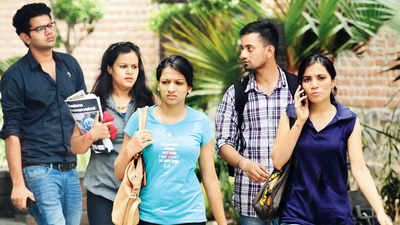
In a move that has sparked concern among international students, Australia has raised its student visa fee from AUD 710 to AUD 1,600, effective from July 1, 2024. This increase, which more than doubles the previous fee, was confirmed by India’s Minister of State for External Affairs, Kirti Vardhan Singh, in a written response to the Rajya Sabha on Thursday, November 28, 2024. The announcement has raised serious questions about the affordability of studying in Australia for students, particularly from India, a country that has been sending increasing numbers of students to Australian institutions.
The Australian government’s decision to hike the international student visa fee comes at a time when global education trends are already shifting, and students are facing a host of financial challenges. For India, this policy change could significantly alter the landscape of higher education abroad. Minister Singh confirmed that the matter has been raised with the Australian authorities, along with other concerns affecting Indian students in Australia. The government’s diplomatic efforts in response to this fee increase underscore the growing importance of student welfare in international relations, especially between India and Australia.
Financial Impact on Indian Students
The Australian government’s move to hike the international student visa fee comes as a major blow to Indian students who have long seen Australia as a top destination for higher education. The 126% increase in visa fees could place a significant strain on students planning to study abroad, especially for those from middle-income families who are already managing tuition fees, accommodation costs, and living expenses. The MoS in the Ministry of External Affairs said the “matter has been taken up with relevant authorities in the Australian government along with other issues related to students”.
For many students, the additional AUD 890 per year in visa fees could increase the overall cost of studying in Australia, forcing them to reconsider their options. The surge in fees comes at a time when inflationary pressures and the rising cost of living globally have already made studying abroad more expensive. Many students now face the dilemma of whether to continue with their study plans or look for more affordable alternatives, such as studying in countries with lower visa processing fees or reduced living costs.
Indian Students in Australia Over the Years
For Indian students, Australia has been a preferred destination for years, with its world-class universities, diverse student community, and post-study work opportunities. As of 2024, there are approximately 1,18,109 Indian students enrolled in Australian educational institutions. This figure reflects a decrease from 126,487 students in 2023, indicating a decline driven by various factors such as rising costs and increased competition from other countries.
According to the data published by the Department of Education, Australian Government, the trend of Indian students studying in Australia has seen fluctuations over the years:
• 2019: 115,107 students
• 2020: 114,842 students
• 2021: 99,227 students (impact of Covid-19)
• 2022: 99,374 students
• 2023: 126,487 students
• 2024: 118,109 students.
India-Australia Education Ties at Risk?
The India-Australia bilateral relationship has seen remarkable growth in recent years, particularly in the realm of education. Australia is home to a large Indian diaspora, and a significant number of Indian students are enrolled in its universities. This educational exchange forms a crucial component of the two countries’ economic, academic, and cultural ties. However, recent developments are raising concerns about the future of this relationship.
Firstly, Australian universities have reported a significant rise in visa rejections for Indian students. The rejection rate has now reached 24.3%, the highest since 2012. This increase in rejections, along with the recent hike in student visa fees, could further strain this relationship. Students who are already grappling with the financial challenges of studying abroad may now face additional barriers in securing a visa, making Australia a less attractive destination.
Moreover, the Australian government has reduced the stay duration for international students after completing their studies. The stay period for Master’s graduates has been cut to just two years, while PhD graduates will now be allowed to stay for only three years. This reduction could discourage potential students who were initially drawn to the opportunity of gaining work experience in Australia after their studies.
Alternatives For Indian Students
With Australia’s visa fee hike and other restrictive policies, many Indian students are likely to consider new study destinations. Countries in Asia, such as Japan and South Korea, are becoming increasingly attractive due to their affordable education, government scholarships, and internationalisation initiatives. Japan aims to attract 400,000 international students by 2033, while South Korea is offering multiple government-funded scholarships to boost its global education appeal. These factors, combined with low living costs, make them appealing alternatives for students seeking quality education at a lower cost.
In addition, European nations like Germany, France, and Ireland are positioning themselves as strong competitors. Germany, with its no tuition fees at public universities and a 107% increase in Indian student enrolments in recent years, offers affordable, high-quality education. France, aiming to host 30,000 Indian students by 2030, provides a multicultural environment and affordable living options, while Ireland has seen a rapid rise in international students, tripling its numbers from 2010 to 2020. As a result, these countries are becoming increasingly attractive for Indian students looking for financial relief and robust academic opportunities, alongside or instead of traditional destinations like the US, UK, or Australia.
A Pivotal Moment for Indian Students
Australia’s decision to increase the student visa fee has far-reaching implications for Indian students. While the country remains a top educational destination, the hike in visa fees could prompt many students to reconsider their plans. With financial concerns already a significant factor in studying abroad, this increase could lead to a shift in student preferences towards other more affordable countries. As the Indian government continues to engage with Australian authorities over the matter, the coming months will be crucial in determining how this policy shift impacts Indian students’ future educational choices.
Get the latest news that takes place in the education sector in India. Find the extensive coverage of various topics including top universities and colleges in India, school reopening, in-depth exam analysis, and more. Stay up to date with The Times of India for the newest updates on CBSE, ICSE, Board exams, competitive exams, date sheet, admit card, exam analysis, results, admissions, colleges, etc.

